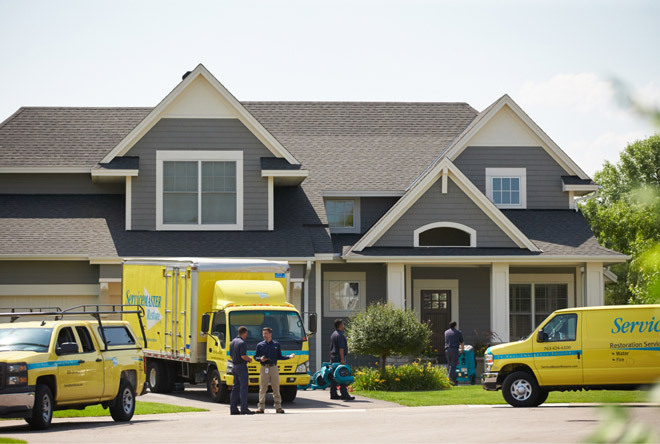water damage Inspection & Evaluation
A thorough examination using specialize moisture-detection meters, probes and sensors to determine the extent of the damage enables us to form the most effective plan for returning your property to normal as quickly as possible. Our inspection may include identifying possible hoses or other parts that may have been the cause, tagging these for the insurance company and providing documentation.
Depending on your specific water damage, we may inspect and evaluate the following:
Carpeting

We evaluate the condition of carpeting, a common element in water restoration projects. The approach varies depending on the type of water damage (white, grey, or black). For cleaner water, we may extract the water and allow the existing carpet and pad to dry. If necessary, we disengage the carpet from the tack strip, remove threshold coverings, and open seams as needed to prevent further damage. In cases with more severe or contaminated water, we often remove the pad and carpet to prevent additional damage and microbial growth, creating a more favorable environment for dehumidification.
Other Flooring
For tile, vinyl, and laminate floors, we determine whether they can be dried in place or if removal and replacement are more cost-effective. Non-porous floors may trap moisture that can damage the subflooring, making inspection crucial. The same consideration applies to wood floors. While specialized drying systems and dehumidifiers facilitate efficient drying for wood floors, the process may take up to three weeks due to hardwood density and urethane finishes.
Walls, Ceilings, and Cabinets: During the inspection, we may remove baseboards and drywall to assess the extent of damage. Baseboard removal can be necessary to facilitate drying and address moisture trapped between the baseboard and the wall. For drywall, we often drill holes in walls and ceilings to allow moisture to escape, minimizing further damage and potential microbial growth. The decision to salvage or replace walls, ceilings, and cabinets is based on factors such as the water source, exposure duration, and visible damage.
Assessment of Structural Areas & Materials
During the restoration process, a thorough evaluation of various structural areas and materials is essential:
- Evaluate Insulation: We determine whether it's more cost-effective to dry insulation in place or to remove and restore it, considering factors like the extent of damage and the potential for microbial growth.
- Inspect Attic: Our inspection of the attic area includes checking for wet insulation, assessing framing conditions, and evaluating stored contents that may require treatment or protection to prevent further damage.
- Inspect Basement: Basements and crawlspaces often require inspection to plan appropriate drying procedures, particularly for addressing potential water seepage issues. Proper planning ensures effective restoration.
- Inspect Ductwork: We thoroughly inspect ductwork throughout affected areas, including floor vents, to identify any signs of water intrusion. Addressing ductwork issues is crucial to maintaining indoor air quality and preventing further damage.
Our goal is to provide comprehensive assessments of all structural areas and materials, ensuring that the most suitable restoration approaches are implemented for each specific situation.
Furniture
The extent of damage and the construction of furniture will determine if your furniture can be restored. Your furniture must be dried before damage can be adequately assessed. Non-salvageable furniture will be documented for you, and if any items need to be discarded, a customer release form will need to be signed.


